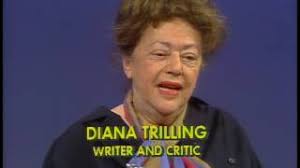10. Lillian Ross
“The
style of the Huston pictures, Huston being one of the few Hollywood directors
who manage to leave their personal mark on the films they make, was the style
of the man.” -Lillian Ross
Andrew Sarris, for one,
might disagree. The pioneering film critic and American popularizer of the
auteur theory is having none of John Marcellus Huston. The auteur theory sought
to rescue Hollywood directors of the studio era from the ranks of anonymous
industrial laborers by locating a signature style and vision across their body
of work and, for Sarris, Huston simply didn’t have it. In his classic 1968
study, The American Cinema, in which
he groups Hollywood directors by tiers, Sarris famously damns the Maltese Falcon director to the “Less
than Meets the Eye” category, noting, contra
Ross, that “Even in his palmier days, Huston displayed his material without
projecting his personality. His technique has always been evasive, his camera
often pitched at a standoffish angle away from the heart of the action.”
In real life, though, it
seems, Huston was pure personality, a strutting, hypermasculine man’s man who
was perfectly at ease with all manner of people and whom one of the stunt men
working on one of his films describes as “all guy” in Lillian Ross’s 1952 book Picture. He was a less sinister version of the flamboyant villain
Noah Cross he played in Chinatown, a
less stereotypical version of Clint Eastwood’s macho “John Wilson,” the thinly
disguised Huston stand-in from White
Hunter Black Heart. He certainly makes a vivid impression in Picture, Ross’ book-length account of
the shooting and subsequent studio re-editing of Huston’s doomed version of The Red Badge of Courage. Early in the
book, Ross observes Huston lighting a cigarette by scraping a match on his
thumbnail and then smoking while looking out the window as the sun sets. It is,
she thinks, just like a shot from one of his movies, and concludes “he was
simply the raw material of his own art, that is, the man whose personality left
its imprint, unmistakably, on what had come to be known as a Huston picture.”
Whether or not this
famous personality comes through in his movies as vividly as it does in Picture may have to remain an unsettled question
between Ross and Sarris (and Sarris does find some consistencies throughout
Huston’s body of work, mostly having to do with his themes and his sense of
defeatism), but it’s part of a once-lively debate. For Sarris, writing in 1968,
it was easy enough to see the works of contemporary directors like Godard,
Fellini, and Antonioni as auterist statements, but what about those American
directors who had toiled under the now-defunct studio system? Echoing the
concerns of earlier French film theorists, Sarris’ gestures were, in their way,
heroic, rescuing the individual from the faceless factory system that aimed to
squelch personality and any hint of art in equal measure.
But they were also a
little silly. The image of a great man (they were almost always men) leaving
his mark on a would-be anonymous product through sheer force of personality
hasn’t exactly dated well. And furthermore, such an approach downplays the many
contributors (screenwriters in particular) that played such an important part
in what was always a highly collaborative process. Of course, many writers have
taken issue with this exclusive focus on directors, most notably Thomas Schatz,
in his widely-cited study of Hollywood’s Golden Age, The Genius of the System, but the auterist attitude still continues
to hold sway in the film crit world. It was certainly the basis of my way of
thinking during the half decade I worked as a movie reviewer.
In the end, Picture both confirms and denies the
importance of auterism. John Huston sets out to make the movie he wants to
make, a passion project of sorts, and although the studio head, Louis B. Mayer,
hates the idea, Huston has enough clout to get the green light. He shoots what
everyone seems to agree is an unconventional but highly effective war picture,
but when test audiences hate it, the film is completely recut and narration is
added, all of which is done when Huston is no longer working on the project,
when he is off in Africa shooting another movie. On the one hand, then, the
film is truly a studio product, subject to whatever butchering the executives
deemed necessary. On the other hand, this butchery points up the importance of
Huston’s vision. The film was pure and focused when he directed it; it only
became the more conventional product, one that few people seemed much to like,
after his involvement ended. No one should applaud that type of studio
meddling. But nor should anyone be deluded into the cult of personality that
ignores the influence of the Louis B. Mayers, the Dore Scharys, the Nicholas
Schenks—or that of a legion of semi-anonymous screenwriters—on the final
outcome of so many classic Hollywood films. On both counts, Lillian Ross sets
the record straight.



Comments
Post a Comment